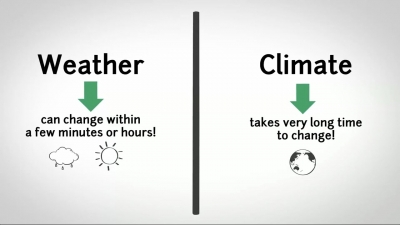
|
Yes, they are. Weather is the state of the atmosphere. Gravity, sunlight, the oceans and landscape influence air movement within the atmosphere, creating new cycles of sunshine, cloud, rain or snow. When looked at over many years, it is possible to see a pattern in these weather cycles, which occur again and again in an area, to define the climate of that area. Weather occurs at a particular time; climate is the average of weather conditions over many years. |
More specifically, weather is the mix of events that happen each day in our atmosphere. Even though there’s only one atmosphere on Earth, the weather isn’t the same all around the world. Weather is different in different parts of the world and changes over minutes, hours, days, and weeks.
Most weather happens in the part of Earth’s atmosphere that is closest to the ground—called the troposphere. And, there are many different factors that can change the atmosphere in a certain area like air pressure, temperature, humidity, wind speed and direction, and lots of other things. Together, they determine what the weather is like at a given time and location.
Whereas weather refers to short-term changes in the atmosphere, climate describes what the weather is like over a long period of time in a specific area. Different regions can have different climates. To describe the climate of a place, we might say what the temperatures are like during different seasons, how windy it usually is, or how much rain or snow typically falls.
When scientists talk about climate, they’re often looking at averages of precipitation, temperature, humidity, sunshine, wind, and other measures of weather that occur over a long period in a particular place. In some instances, they might look at these averages over 30 years. And, we refer to these three-decade averages of weather observations as Climate Normals.
Credit: NOAA
Picture credit: Google




